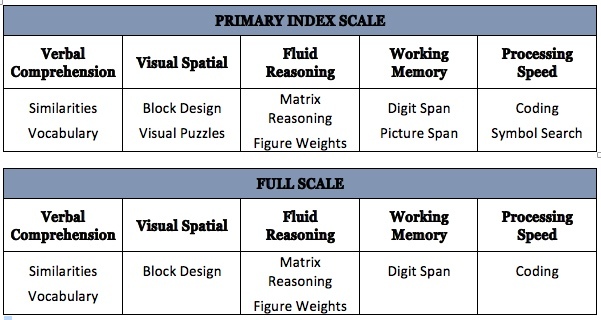Assessment for Learning MOOC’s Updates
Intelligence Test
Essential Update #1: Find an example of an intelligence test and explain how it works. Analyze its strengths and weaknesses as a form of assessment.
The Weschler Intelligence Scale for Children (WISC-V Test) is an intelligence test used for children between the ages of 6-16 years old that measures a child's intellectual and cognitive ability and offers realistic expectations for a child’s performance.
There are five primary index scores, Verbal Comprehension, Visual Spatial, Fluid Reasoning, Working Memory, and Processing Speed.
What does Index Measure?
- Verbal Comprehension measures a child’s vocabulary knowledge and how they apply it.
- Visual Spatial measures their knowledge of spatial relationships, visible details, and understanding of the relationship between parts and a whole.
- Fluid Reasoning measures their understanding of visual objects and applying their knowledge.
- Working Memory measures attention, concentration, and mental reasoning.
- Processing Speed measures speed and accuracy of identifying objects, short term memory, and visual-motor coordination.
Each Primary Index is comprised of 2 subtests, for a total of 10 subtests. The Primary Index Scale will yield five scores that summarizes abilities across the five cognitive abilities.
The Full-Scale Intelligence Quotient (IQ) score is derived from 7 of the 10 subtests.
Strengths:
The WISC-V is widely used by school districts and psychologists and is considered the “gold standard” for intelligence tests. The assessment does not base a child’s potential solely on the average range; instead, it allows for a better understanding of children's abilities or deficiencies on all levels. The WISC-V can identify whether or not a child is gifted, whether they have an underlying learning disability, placement in specialized programs, identifying potential barriers based on social or emotional issues, and as a clinical tool.
The WISC test has made several revisions since it first came out in 1949 to compensate for the Flynn effect and ensure that the test remains relevant to the current developments in psychology, technology, and population changes.
Weaknesses:
Since the WISC-V test is given to children starting at the age of 6, their inexperience in testing can affect their performance.
The WISC-V test results can easily be misinterpreted if you are unfamiliar with how it is structured
References:
Wikipedia contributors, "Wechsler Intelligence Scale for Children," Wikipedia, The Free Encyclopedia, https://en.wikipedia.org/w/index.php?title=Wechsler_Intelligence_Scale_for_Children&oldid=981217771 (accessed November 8, 2020).
https://www.melbournechildpsychology.com.au/blog/wisc-v-assessments-for-improving-your-childs-learning-potential-part-1/ (accessed November, 8 2020.)
https://www.smartkidswithld.org/first-steps/evaluating-your-child/understanding-iq-test-scores/ (accessed November, 8 2020.)


